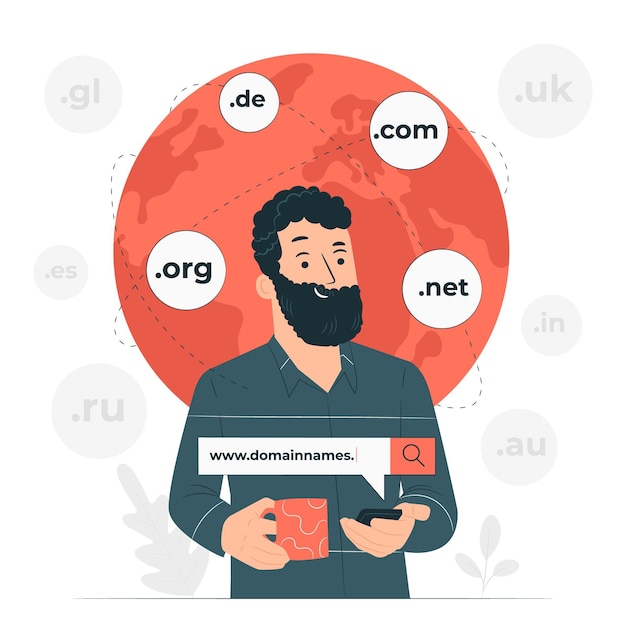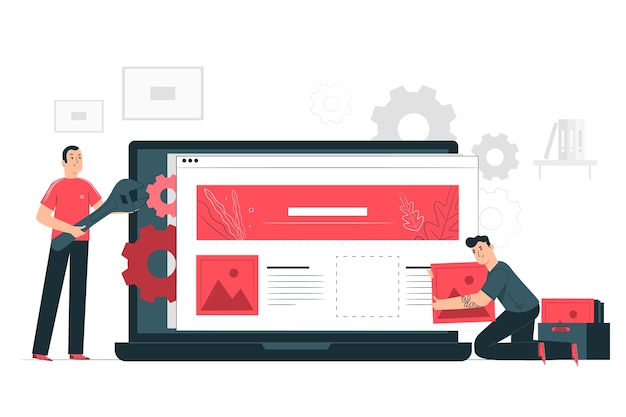Are you looking to build a website from scratch but don't know where to start? Don't worry, you're not alone. Building a website can seem like a daunting task, but with the right guidance, anyone can do it. In this comprehensive guide, we'll take you through the steps of building a website from scratch, from choosing a domain name to designing and launching your site.
 |
| Image by Freepik |
Step 1: Choose a Domain Name
The first step in building a website is choosing a domain name. Choosing the right domain name is a crucial step in building a website. Your domain name is the address that people will use to find your website, so it should be easy to remember, easy to spell, and relevant to your brand or business. |
| Image by storyset on Freepik |
Consider using keywords that describe your website's purpose or niche to make it more discoverable in search engine results pages (SERPs). You can use a domain registrar like GoDaddy or Namecheap, or BigRock to search for available domain names and purchase one that suits your needs. Keep in mind that your domain name will represent your brand or business online, so take the time to choose a name that accurately reflects your identity and resonates with your target audience.
Step 2: Choose a Web Host
After acquiring a domain name, the next crucial step is to select a suitable web host. A web host is a service that stores your website files and makes them available on the internet. There are many web hosting providers to choose from, such as Bluehost, HostGator, and SiteGround, it's essential to consider several factors before making your final decision.
| Image by macrovector on Freepik |
One of the most critical factors to consider is the price of the web hosting service. You want to choose a web host that fits your budget while still providing reliable service. Additionally, you should consider the reliability of the web host. You want a web host that guarantees minimal downtime and fast loading speeds for your website.
Another crucial factor to consider is customer support. You want a web host that provides excellent customer support, including 24/7 availability, quick response times, and knowledgeable staff. This is especially important if you're new to website creation and need assistance with technical issues.
Step 3: Install WordPress
WordPress is a popular content management system (CMS) that makes it easy to create and manage a website. Most web hosts offer a one-click installation of WordPress, which makes it easy to get started. Once you've installed WordPress, you can choose a theme and customize your site's design.
Alternatively, you have the option of utilizing Google Blogger, a free platform that eliminates the need for hosting and domain registration. With Google Blogger, you can create and publish your website without any upfront costs, making it an ideal choice for those on a tight budget or just starting out in the world of website creation.
Step 4: Choose a Theme
A theme is a pre-designed template that determines the look and feel of your website. There are thousands of free and paid WordPress themes to choose from. Look for a theme that suits your needs and is easy to customize. You can also hire a web designer to create a custom theme for your site.
Blogger provides a range of free, responsive themes that are optimized for various devices, ensuring that your website looks great on desktops, tablets, and smartphones. Additionally, if you're looking for more customization options, you can purchase responsive themes from third-party providers that offer a wider range of design choices and features. With the flexibility to choose from a variety of themes, you can create a website that reflects your unique style and meets your specific needs.Step 5: Customize Your Site
Once you've chosen a theme, you can customize your site's design. This includes adding your logo, changing the color scheme, and creating pages and posts. WordPress makes it easy to customize your site without any coding knowledge.
 |
| Image by storyset on Freepik |
With WordPress's user-friendly interface, you can easily customize your site without any coding knowledge, making it accessible to anyone regardless of their technical expertise. By taking the time to personalize your site's design, you can create a unique online presence that resonates with your audience and sets you apart from the competition.
Step 6: Install Plugins
Once you have set up your WordPress website, you can enhance its functionality by installing plugins that cater to your specific needs. These plugins can range from security and performance optimization to social media integration and e-commerce solutions.
 |
| Image by vectorjuice on Freepik |
Some of the most popular plugins include Yoast SEO for search engine optimization, Jetpack for site security and performance, and WooCommerce for creating an online store. By installing the right plugins, you can take your website to the next level and provide your visitors with a seamless user experience.
Step 7: Optimize Your Site for SEO
Search engine optimization (SEO) is the process of optimizing your site to rank higher in search engine results pages (SERPs). To ensure that your website is easily discoverable by search engines, it's crucial to optimize it for search engine optimization (SEO). This involves optimizing your site's content, meta tags, and images to improve its visibility and ranking in search engine results pages (SERPs).
 |
| Image by storyset on Freepik |
By using a plugin like Yoast SEO, you can easily optimize your site for SEO by analyzing your content, providing suggestions for improvement, and generating XML sitemaps that help search engines crawl and index your site. By implementing effective SEO strategies, you can attract more organic traffic to your site and increase your online visibility.
Step 8: Launch Your Site
After you have customized your website and optimized it for search engines, it's time to launch your site and make it live on the internet. Before launching, it's important to test your website on different devices and browsers to ensure that it looks and functions correctly.
 |
| Image by storyset on Freepik |
Conclusion
In conclusion, building a website from scratch may seem like a daunting task, but with the right guidance, anyone can do it. Follow these steps to build a website that looks great, functions well, and is optimized for search engines. With a little time and effort, you can create a website that represents your brand and helps you achieve your goals.